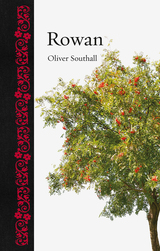3 start with R start with R

Remarkable Trees tells the unique story of more than sixty species, each selected for its resonance and connection with people. In portraits that combine vivid cultural and historical narrative with a firm scientific grounding, Christina Harrison and Tony Kirkham reveal fascinating details of trees from the world’s major environmental zones and habitats. Some are obvious superstars such as oaks, redwoods and coconut, while others are more surprising: we learn of the monkey puzzle, a tree native to Chile that “can grow for 1,000 years,” and of the manchineel, a tree that contains sap so toxic to human skin that it’s a risk to stand beneath it on a rainy day. In these pages are trees that are healers and killers, trees that serve as foundations of great buildings and grand feasts, and trees that leave us with a sense of wonder and of worry for their survival.
In a tribute to the artists and botanists who have been inspired by trees for centuries, this book is filled with 240 delightful illustrations. The varied and beautiful images come from the unrivalled archive at the Royal Botanic Gardens, Kew, and they bring this enlightening and enchanting volume to life.
While trees have supported us for millennia, we have recently lost that direct, deep connection with them. Harrison and Kirkham remind us that we do not have to look far to reestablish that relationship and that we can still cherish the splendor and significance of these quiet giants.

This is a travel story of trees and shrubs—as rousing as the adventures of Marco Polo. Stephen Spongberg’s vividly written and lavishly illustrated account tells of intrepid and extraordinary explorers who journeyed to the far corners of the globe and brought back to Europe and North America a wealth of exotic plant species. It constitutes a veritable history of ornamental trees and shrubs.
In the seventeenth century, gardening in England and Europe was in the throes of revolution. Plants—no longer cultivated solely for their practical value as a source of food or medicinal herbs—were woven into the landscape for architectural effects. Flowers were grown and arranged to beautify banquet tables, and the gardens surrounding palaces and country estates became pleasure grounds, their design vying with the genius of the houses themselves. Where did these hundreds of trees and shrubs originate? Virginia creepers, American sycamores, Washington thorns, black walnuts, umbrella trees. Franklin trees, and even poison ivy are just a few of the many species that were brought to European gardens by adventurous plantsmen exploring colonial America.
Following the Revolutionary War, scientific and agricultural societies were formed in Boston and Philadelphia, botanical gardens were established in New York and Cambridge, and scientific expeditions were organized for the purpose of fostering the discovery of new plants throughout the world that could be grown in the North American climate.
Without doubt, the most fertile plant explorations by Americans and Europeans were conducted in the mysterious Orient. With the opening of Japanese and Chinese ports to foreign trade in the middle of the nineteenth century, European plantsmen were able to indulge their insatiable appetite for some of the most astounding ornamental plants the Western world had ever seen: ginkgo trees, lacebark pines, Japanese yew, honeysuckles, lilacs, crabapples, magnolias, cherry trees, to name only a few.
A Reunion of Trees focuses on the particular contribution of the Arnold Arboretum, which was established in Boston in 1872 for the purpose of displaying and studying exotic plants from around the globe. Scores of trees and shrubs on the Arboretum grounds are described and illustrated in this handsomely produced volume. The landscape designer interested in recreating period gardens will find this book a treasure trove of information about the eighteenth and nineteenth centuries, while amateur and professional gardeners alike will discover a unique resource book for many unusual plants.

Rowan is the first in-depth natural and cultural history of this much-loved plant sometimes called mountain ash or dogberry. Through myth, medicine, literature, land art, and contemporary rewilding, Oliver Southall uncovers the many meanings of this singular reddish, fruit shrub: a potent symbol of nostalgia on the one hand and of environmental activism on the other. Taking the reader on an eclectic journey across history, Rowan charts our changing relationships with nature and landscape, raising urgent questions about how we value and relate to the non-human world.
READERS
Browse our collection.
PUBLISHERS
See BiblioVault's publisher services.
STUDENT SERVICES
Files for college accessibility offices.
UChicago Accessibility Resources
home | accessibility | search | about | contact us
BiblioVault ® 2001 - 2024
The University of Chicago Press









